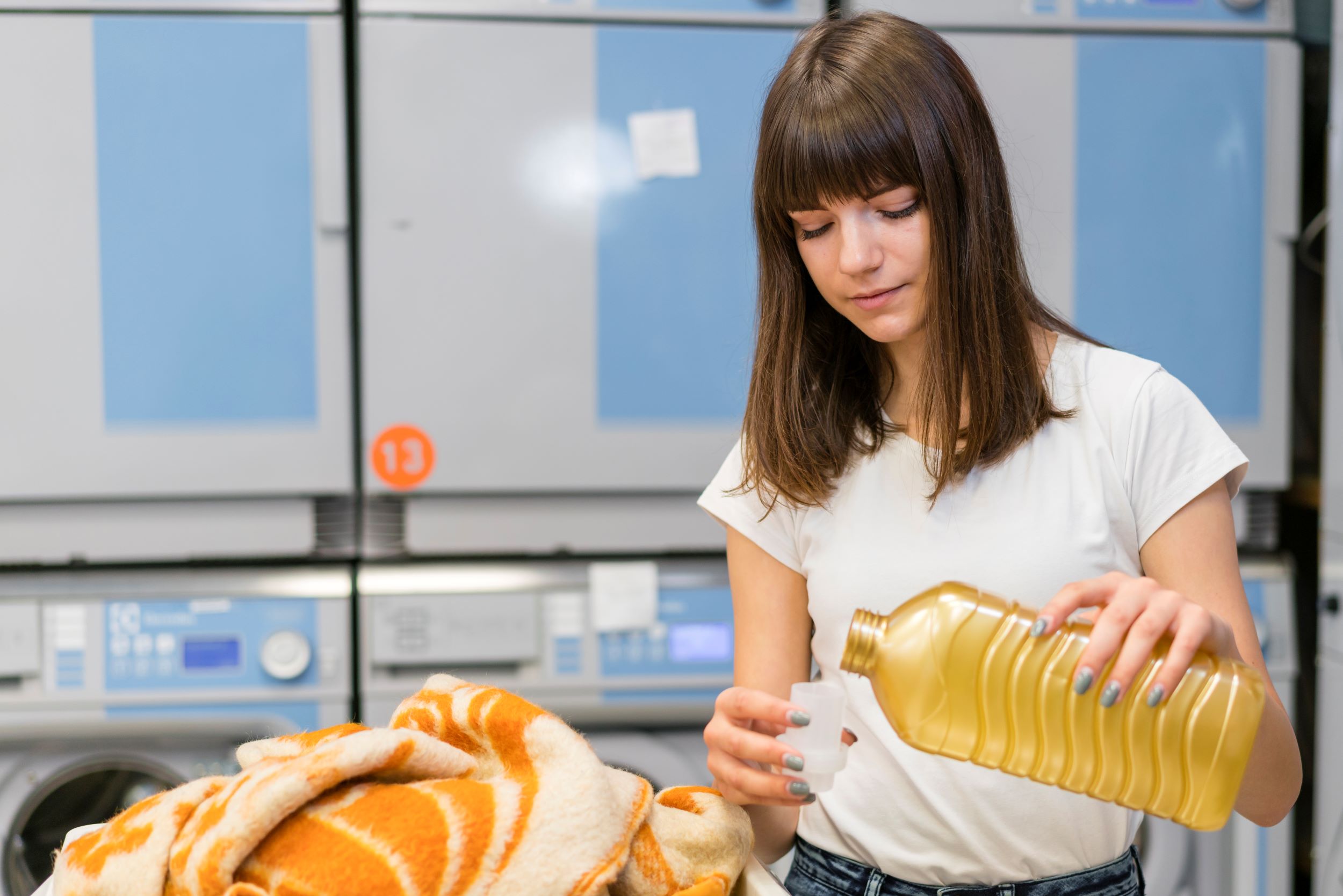Ah, laundry day. It’s a routine chore for most of us—sorting clothes, tossing them in the machine, and waiting for the magic to happen. But when it comes to the products we use, things can get a bit confusing. Two of the most common fabric cleaning chemicals in the laundry aisle are fabric softener and fabric detergent, and while they’re often mentioned together, they serve very different purposes. If you’ve ever found yourself wondering, “Do I need both?” or “What exactly do they do?”—you’re not alone. Let’s break it down.
The Role of Fabric Detergent: The Cleaning Hero
Let’s begin with the fundamentals, shall we? For your laundry regimen, fabric detergent is the most important component. This is the substance that is responsible for cleaning your clothes, removing dirt, stains, and any other muck that our garments come into contact with throughout the day.
How Does Detergent Work?
The primary chemicals that are responsible for breaking down oils, grease, and grime are known as surfactants, and detergent is loaded with them. The surface tension of water is decreased by these surfactants, which makes it simpler for water to penetrate the fabric and remove stains and spots. In addition, detergents contain enzymes that are designed to remove particular kinds of stains, such as those that are protein-based and come from sweat or food. Imagine that your detergent is a group of minuscule workers who are diligently removing the stains from your garments until they are completely free of any spots.
In addition to surfactants and enzymes, detergents typically contain other components such as bleach, brighteners, and fragrances. These components are designed to increase the effectiveness of the cleaning process and leave your garments looking and smelling fresh.
When Should You Use Detergent?
Always! For every load of laundry, detergent is an absolute necessity. Those annoying stains would continue to accumulate over time if you did not have them, and your garments would not be cleansed correctly. It doesn’t matter if you’re washing your regular clothes, your bed linens, or your workout gear; detergent is your go-to product for a thorough cleaning.
The Purpose of Fabric Softener: The Finishing Touch
Now, let’s talk about the fabric softener that we have. Fabric softener, in contrast to detergent, is not intended to keep your garments clean. Instead, it’s used to help your garments feel easier to wear, smell better, and minimize the static cling. A little bit of elegance is added to your washing routine by this finishing touch.
How Does Fabric Softener Work?
The process by which fabric softeners function involves applying a very thin layer of chemicals to the fibers of your clothing. Using these chemicals, the fibers are smoothed out, which results in a softer sensation when they are touched. Moreover, this layer lessens the friction that exists between the fibers, which is what contributes to the reduction of static cling.
If you’ve ever pulled clothes out of the dryer and found them sticking together like they’re best friends, fabric softener can help prevent that.
Fabric softeners, in addition to softening, often include perfumes that impart the aroma of freshly laundered clothes, which is a scent that we all adore. Additionally, some of them have components that assist in eliminating creases, which makes ironing a little bit simpler (or, if you’re lucky, completely unnecessary!).
When Should You Use Fabric Softener?
Fabric softener is optional, but it’s great for certain types of laundry. If you want your towels to be extra fluffy, your sheets to feel like hotel linens or your clothes to have a light, pleasant scent, then fabric softener is your friend. However, you don’t need to use it with every load. For example, it’s usually not recommended for athletic wear or moisture-wicking fabrics, as the coating it leaves can interfere with the fabric’s ability to breathe or absorb moisture.
Key Differences Between Fabric Softener and Fabric Detergent
So, we’ve established that detergent cleans while fabric softener adds softness and fragrance. But let’s get into some specific differences:
The main function of detergent is to clean; it effectively removes dirt, stains, and odors from your clothes. In contrast, fabric softener’s main role is to soften fabrics, reduce static, and infuse a pleasant scent. When we look at ingredients, detergent typically contains surfactants, enzymes, bleaches, and sometimes fragrances, all focused on breaking down and eliminating dirt. Fabric softener, on the other hand, consists of conditioning agents, fragrances, and chemicals designed to coat fabric fibers, reducing friction and making clothes feel softer.
In terms of usage, you should use detergent every time you do laundry—no exceptions here! Fabric softener, however, is an optional add-on, best utilized when you want your clothes to feel softer or smell nicer. Regarding application, detergent is added during the main wash cycle, where it mixes with water and is agitated to clean your garments. Fabric softener is usually introduced during the rinse cycle or placed in a special compartment of your washing machine that releases it at the appropriate time.
The impact on clothes also varies: while detergent cleans your clothes, it doesn’t affect their feel beyond removing dirt. Fabric softener, however, changes the texture of your clothes, making them feel softer and reducing static.
Now, can you use one without the other?
Absolutely! While they are often used together, you can certainly use detergent without fabric softener and vice versa, depending on your needs. If your primary goal is to clean your clothes, using only detergent is perfectly fine. Your clothes will come out clean, though they may not be as soft or fragrant as they would be with fabric softener.
On the flip side, using only fabric softener is less common and not recommended, as it won’t clean your clothes, leaving dirt and stains behind. If you’re just looking to refresh items that aren’t dirty—like a sweater you’ve only worn once—you might consider a very light rinse with fabric softener, but remember, it’s not a substitute for detergent.
Tips for Using Detergent and Fabric Softener Together
When you do use both, it’s important to use them correctly to get the best results.
Measure Carefully: Using too much detergent can leave residue on your clothes, while too much fabric softener can cause build-up that makes clothes feel greasy. Always follow the instructions on the packaging.
Choose the Right Products: If you have sensitive skin, look for detergents and fabric softeners that are hypoallergenic and free from dyes and perfumes. There are also eco-friendly options if you’re looking to reduce your environmental footprint.
Mind Your Fabrics: As mentioned earlier, some fabrics don’t do well with fabric softeners. Always check the care label on your clothes before using softener, especially with technical fabrics like activewear.
TAKE CARE OF YOUR FABRIC NEEDS WITH ALCLEAN!
AlClean’s got you covered with their fantastic range of fabric care products. Our fabric cleaner tackles stains like a pro, while the bleach brightens up your whites. The fabric softener leaves your clothes super soft and smells amazing. Plus, our new fabric detergent promises a thorough clean without harshness.
Pamper your wardrobe with AlClean and enjoy fresh, fabulous clothes every time!

